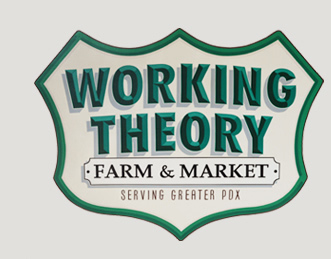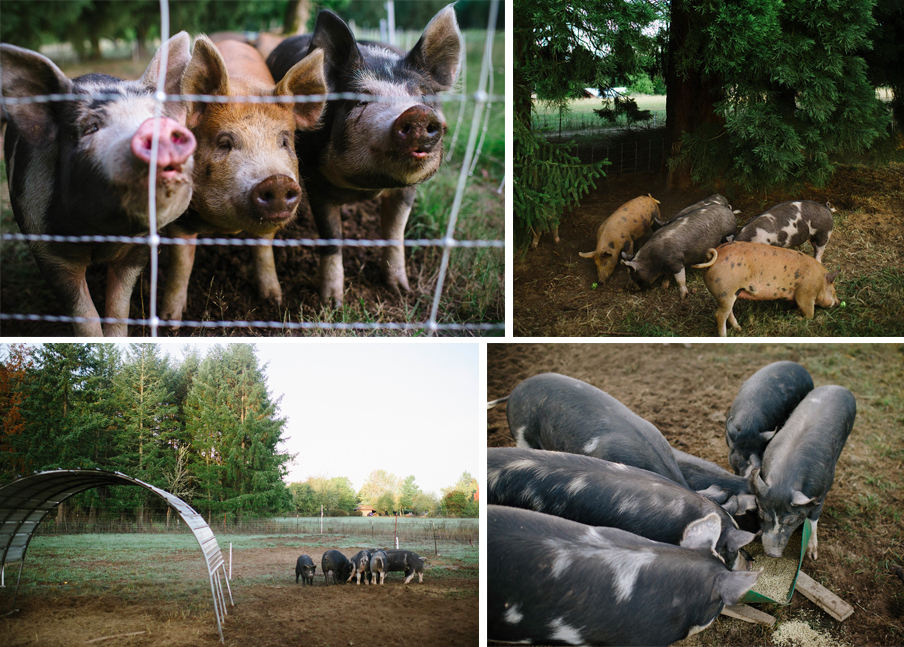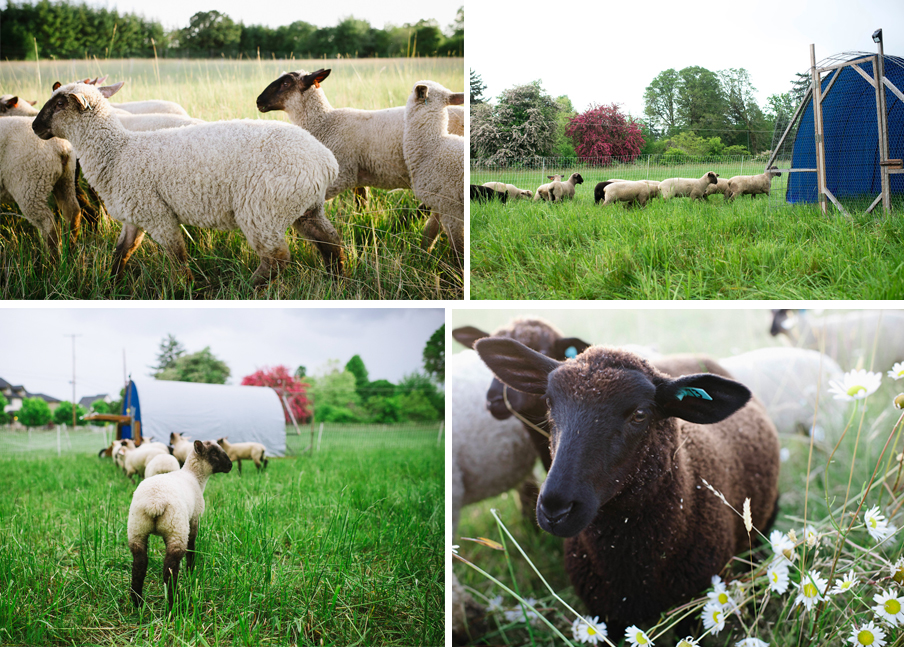
LAMB & PORK SHARES
Email justin@workingtheoryfarm.com, call / text 503-592-0309 to learn more.
CLICK HERE to make a deposit and reserve your share!
HOW DID A VEGETARIAN OF 25 YEARS COME TO RAISE ANIMALS FOR MEAT? |
||
Much to the chagrin of my parents, I was seven years old when I decided that it was wrong to kill and eat animals. Just like that, I gave up meat cold turkey. To be honest, I didn’t think much more about the decision; being a vegetarian quickly became a part of my identity and eating meat was something I just didn’t do. |
||
PIGS |
||
WHY PIGS? |
||
In addition to growing great meat, these pigs have been hard at work for the farm this season. They’ve lived their whole lives outside, and they’ve moved to a new piece of pasture every week. |
||
OUR PIGS |
||
We are raising a new breed, Gloucestershire Old Spots, which are known for their hardiness on pasture, excellent foraging skills, docile temperament and superb quality of meat. They have been rotating through last year's crop fields, rooting up pepper plants, chomping on volunteer spinach and generally running amok. We will begin processing pigs here on the farm later this month and will continue through July. Shares can be purchased as a whole or half hog, and I will happily facilitate connections between folks who are interested in purchasing a quarter share only. More details can be found through the farm website. Price will be on a sliding scale between $4.75-$6.00/lb based on the hanging weight + slaughter/butcher fees to The Meating Place. |
||
 |
HOW DOES BUYING MEAT WORK? |
||
| We’ve made every effort to give these pigs and lambs the best possible life – they’ve lived their whole lives on open pasture and they’ve eaten a consistently high quality diet – organically-grown grass for the lambs and for the pigs a balanced diet of organic fruits and veggies and feed free of antibiotics. We made all of our choices with the animals’ welfare in mind, and I couldn’t imagine ending their lives with a stressful ride in an unfamiliar trailer to a commercial slaughterhouse. Instead, we’ve opted to invite a professional butcher to the farm to process both the pigs and the lambs onsite using the most humane and stress-free methods. All of the animals will be slaughtered on-farm in mid-September, and purchase arrangements must be made prior to processing. | ||
PURCHASING PIGS |
||
| Pigs can be bought by the whole or the half (though you can certainly split a half share with other friends or family if you prefer), and you will put down a deposit of $200 to reserve your share. The final price will be determined by the hanging weight of the animal (after it has been dressed). You pay the farm for the balance, and you pay the butcher separately for the slaughter and processing (cutting, smoking, sausage- making, wrapping) . As with the fruits and vegetables from the farm, my hope is always to cover my costs and keep the food affordable for buyers. In an effort to be totally transparent, I will tell you that the three biggest costs (in addition to infrastructure and the bulk of the labor of their care, which won’t really be accounted for here) were the pigs’ store-bought food (upwards of 1000 lbs per pig) and the price of the young piglets themselves ($100 each). We made every effort to buy the best food we could find locally, and our choice of breeder was made with careful scrutiny. Both decisions have paid off, as our cohort of pigs has been healthy all season. Given these costs and the challenges of keeping good local food affordable, I’ve opted to offer the purchase of the pigs on a sliding scale. You can choose to pay anywhere from $4.75-$6.00 per pound, depending on what fits your family’s budget. The pigs are not uniform in size, and we will do our best to accommodate requests for a larger or smaller animal. While the smallest quantity I can sell is a half of a pig, you are welcome to find friends with whom you can split this share! | ||
SAMPLE COST BREAKDOWN FOR A HALF PIG |
||
Live weight of a pig at slaughter: ~280 lbs Hanging weight of the carcass: ~190 lbs Weight of a half of carcass: ~95 lbs Deposit to farm: ~$200 Remainder to farm (@$5.25/lb): ~$298.75 Butcher Costs: -Slaughter and Disposal: ~$38 -64¢/lb for cut/wrap: ~$45 -75¢/lb for cure/smoke of bacon: ~7.50 TOTAL (SAMPLE) COST: ~$589.25 |
||
HOW MUCH MEAT IS THAT? |
||
You get to make all of the choices about how you want your share divided, including all of the cuts and the choices of sausage and cured meats.
You should expect a side of pork (half of a hog) to take up about three cubic feet of freezer space. If your space is limited and that’s the only hold up preventing you from signing up, we may be able to lend you some room in our freezer here on the farm. |
||
LAMBS |
||
OUR LAMBS |
||
Last season I expanded the footprint of the farm to include the full 24 acres of the property, which includes nearly ten acres of pasture. Our lambs have spent their entire lives eating grass in the fields, moving every couple of days to a fresh spot and sleeping in a mobile shelter for predator protection. The regular rotations keeps the grass growing and breaks parasitic cycles, which makes for healthier and happier animals. |
||
 |
THE MEAT |
||
Lambs are bought by the whole animal and require a $50 deposit to reserve. As with the pigs, my goal is to raise healthy animals and offer meat at an affordable price point. To that end, I will continue to offer a sliding scale of payment options. You can choose to pay anywhere from $5.50-$8.50 per pound, depending on what fits your family’s budget. Like the pigs, the lambs are not uniform in size, and we will do our best to accommodate requests for a larger or smaller animal. The average hanging weight of each animal will probably be in the ballpark of 40-50#
I am also planning to have the hides professionally cleaned and tanned (with the wool attached). If you buy an animal, you are welcome to purchase the hide. |
||
Email justin@workingtheoryfarm.com, call / text 503-592-0309 to learn more or CLICK HERE to make a deposit and reserve your share.